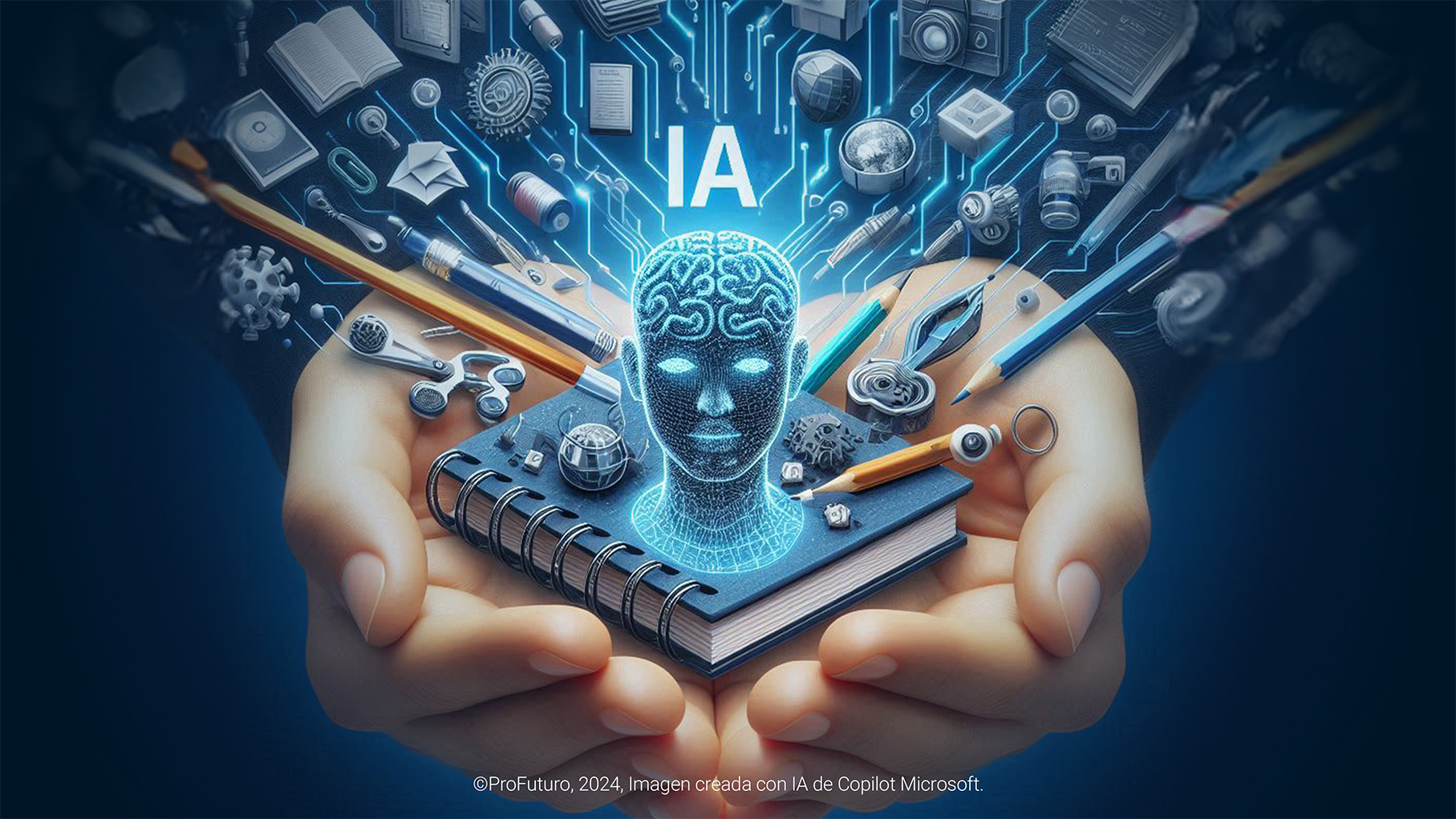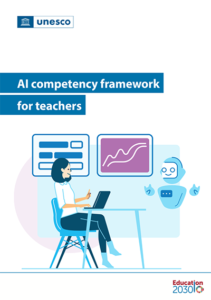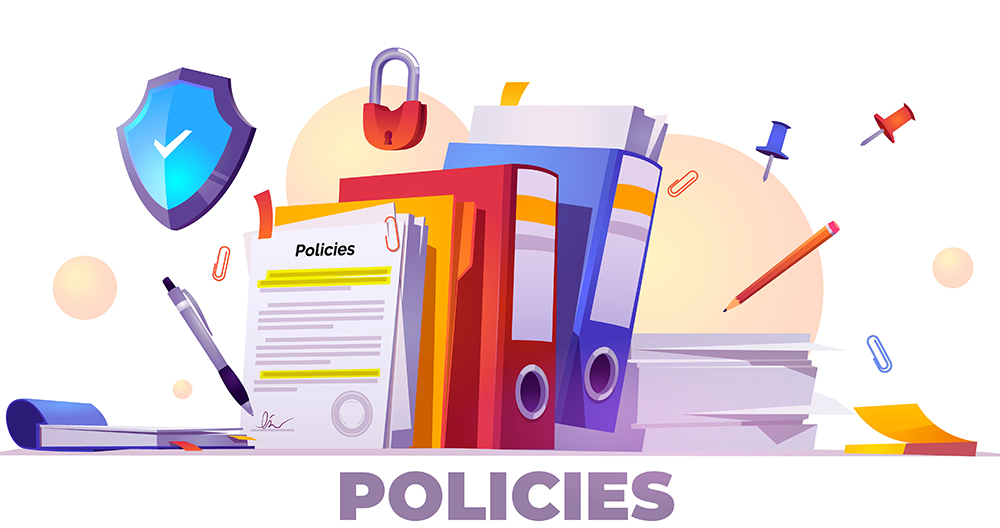Let’s imagine the following scenario. Interior, daytime. A journalist asks ChatGPT for practical examples of how to use AI to teach or learn. In a few seconds, the computer returns 10 examples. One of them grabs our attention. We quote it directly:
Thanks to AI, students can now immerse themselves in historical simulations like never before. A history class is no longer limited to textbooks or videos; students can interact in real-time with AI-generated historical environments, such as Ancient Rome or the French Revolution, recreating key events and making decisions that impact the course of the simulated history.
ChatGPT has managed to ignite our curiosity and set our imagination free, flying into territories more akin to science fiction than the reality of a crisp September day in 2024. So, we continue asking the machine: “And how is that done?”
The response from our artificial intelligence brings us back to reality. The screen shows a series of steps that, as of today, very few teachers would be capable of executing. Using AI to travel to the French Revolution or the Roman Senate is as far out of our reach as Doctor Who’s TARDIS. The difference is that, while stepping into a booth to travel through space-time is still far from our reality, using AI in a history class (or any other subject) is just a few competency frameworks away.
To bring it a little closer, UNESCO has launched two AI competency frameworks: one for teachers and another for students.
Para acercarnos un poco más a ella, la UNESCO ha lanzado dos marcos competenciales en IA: uno para docentes y otro para estudiantes.
Traditional digital literacy is no longer enough. Now, specific competencies are required to address these more complex challenges posed by AI.
Why a Specific Framework for AI?
Unlike traditional digital technologies, AI has the potential to more profoundly transform not only education but also the economy and societies as a whole. This transformative power, which stems from its ability to emulate human behaviour, presents unique ethical and social challenges.
Using AI can lead to issues related to equity (when there’s algorithmic bias in an AI-assisted selection process), transparency (algorithms are not always transparent and do not explain the rules they followed to reach their conclusions), privacy (the large volumes of data they require to function increase the risk of privacy violations), and accountability (AI can make autonomous decisions, as in the case of self-driving vehicles, where it’s difficult to determine responsibility in the event of a serious error). Moreover, AI raises crucial questions about human agency, that is, how humans maintain control over the decisions these technologies make.
As a result, traditional digital literacy is no longer enough. Now, specific competencies are required to address these more complex challenges posed by AI. Let’s see what UNESCO suggests.
Why a Specific Framework for AI?
Unlike traditional digital technologies, AI has the potential to more profoundly transform not only education but also the economy and societies as a whole. This transformative power, which stems from its ability to emulate human behaviour, presents unique ethical and social challenges.
Using AI can lead to issues related to equity (when there’s algorithmic bias in an AI-assisted selection process), transparency (algorithms are not always transparent and do not explain the rules they followed to reach their conclusions), privacy (the large volumes of data they require to function increase the risk of privacy violations), and accountability (AI can make autonomous decisions, as in the case of self-driving vehicles, where it’s difficult to determine responsibility in the event of a serious error). Moreover, AI raises crucial questions about human agency, that is, how humans maintain control over the decisions these technologies make.
As a result, traditional digital literacy is no longer enough. Now, specific competencies are required to address these more complex challenges posed by AI. Let’s see what UNESCO suggests.
Competency Framework for Teachers
What competencies do teachers need to integrate AI into their educational practices in an ethical, effective, and safe way?
- Humans above all. First, teachers must develop a mindset aimed at ensuring that human-to-AI interactions are centred on human rights, human agency, and social well-being. What does this mean? For example, when a teacher uses an AI tool to personalise student learning, they should ensure that students understand how those recommendations work, so they don’t solely rely on the technology (they could teach them to manually review their mistakes and encourage critical reflection on the suggestions they receive).
- AI ethics. The framework advocates for teachers to understand and apply fundamental ethical principles related to AI, such as safety, privacy, and accountability. Teachers are expected to be able to participate in adapting ethical standards to ensure that AI is used fairly and safely in the educational environment. For instance, a teacher using an AI-powered educational platform that collects student data must ensure that student data privacy is protected. This not only involves knowing the platform’s privacy policies but also educating students about the importance of their own digital privacy and how to protect their personal data in the educational environment and beyond.
- Applications of AI in the classroom. The conceptual knowledge and practical skills that teachers need to master to select, adapt, and apply AI tools in their classrooms are specified. This includes understanding how AI works, how models are trained, and how to evaluate AI tools based on the specific needs of the classroom.
- AI pedagogy. As with any type of technology applied to education, teachers must learn to integrate AI into their pedagogical strategies effectively. This includes selecting AI tools that support lesson planning, teaching, and assessment. As teachers progress, they are trained to explore and implement innovative pedagogical practices using AI.
- AI for professional development. AI should also be used as a tool for the continuous professional development of teachers. This implies that educators must learn to use AI to identify their own learning needs and improve their collaborative professional development.
The framework is designed with three levels of progression, allowing teachers to develop these competencies gradually:
- Acquire. At this basic level, teachers develop the essential skills to use AI safely and ethically in education. They are expected to understand the benefits and risks of AI, the fundamental ethical principles, and the basic applications of AI tools.
- Deepen. Here, teachers acquire more advanced skills to integrate AI into teaching, focusing on human responsibility and the safe use of technology. They are trained to critically evaluate AI tools and use them to enrich both teaching and their professional development.
- Create. At this advanced level, teachers are prepared to use AI in innovative and transformative ways in the classroom. They are expected to be able to design customised AI solutions, collaborate on the creation of new pedagogical practices, and lead the implementation of AI in their institutions.
Competency framework for students
When it comes to students, how do we prepare them to be responsible and creative citizens in the age of artificial intelligence? These are the principles that should guide students’ acquisition of competencies:
- Human needs, social justice, and sustainable development: This promotes a critical approach to the relationship between AI and human needs, social justice, and sustainable development. The idea is that students understand the impact of AI on human agency and social responsibilities.
- AI ethics: It underscores the importance of students understanding and applying ethical principles, such as non-discrimination, sustainability, and transparency in the use and development of AI.
- AI techniques and applications: Students must acquire conceptual knowledge and operational skills related to AI and learn to apply this knowledge practically.
- AI systems design: Students are prepared to understand how to design, develop, test, and optimise AI systems, with a focus on solving real-world problems.
Like the teachers’ competency framework, the student framework progresses through three levels:
- Understand: All students should develop basic knowledge about AI, its fundamental concepts, and its ethical implications.
- Apply: Students should be able to apply their AI knowledge to solve complex problems, adapting their skills to new situations.
- Create: Advanced students prepare to become co-creators of AI, designing AI tools and contributing to the development of new technologies with a human-centred approach.
Both frameworks cross general principles with levels of progression to obtain different competency blocks, which provide a detailed guide for developing AI skills. In the case of teachers, this allows them to advance progressively, and in the case of students, it is adapted to different ages and educational levels.
The normalisation of artificial intelligence technologies in the classroom is an evolving path that requires careful and gradual adoption of competency frameworks.
A Decisive Step Towards Normalising AI in Education
The normalisation of artificial intelligence technologies in the classroom is an evolving path that requires careful and gradual adoption of competency frameworks. These transformative tools offer enormous benefits for teaching and learning, but their integration must be guided by a strong ethical and pedagogical approach. The need for both teachers and students to acquire skills and competencies in the responsible use of AI is essential to prepare future generations for a digitised world. However, this process is neither immediate nor linear; it requires ongoing efforts from education systems to keep pace with technological advances. By adopting competency frameworks that offer clear and adapted guidance, countries can ensure that AI is used inclusively, equitably, and ethically in classrooms, promoting relevant and future-oriented education.








